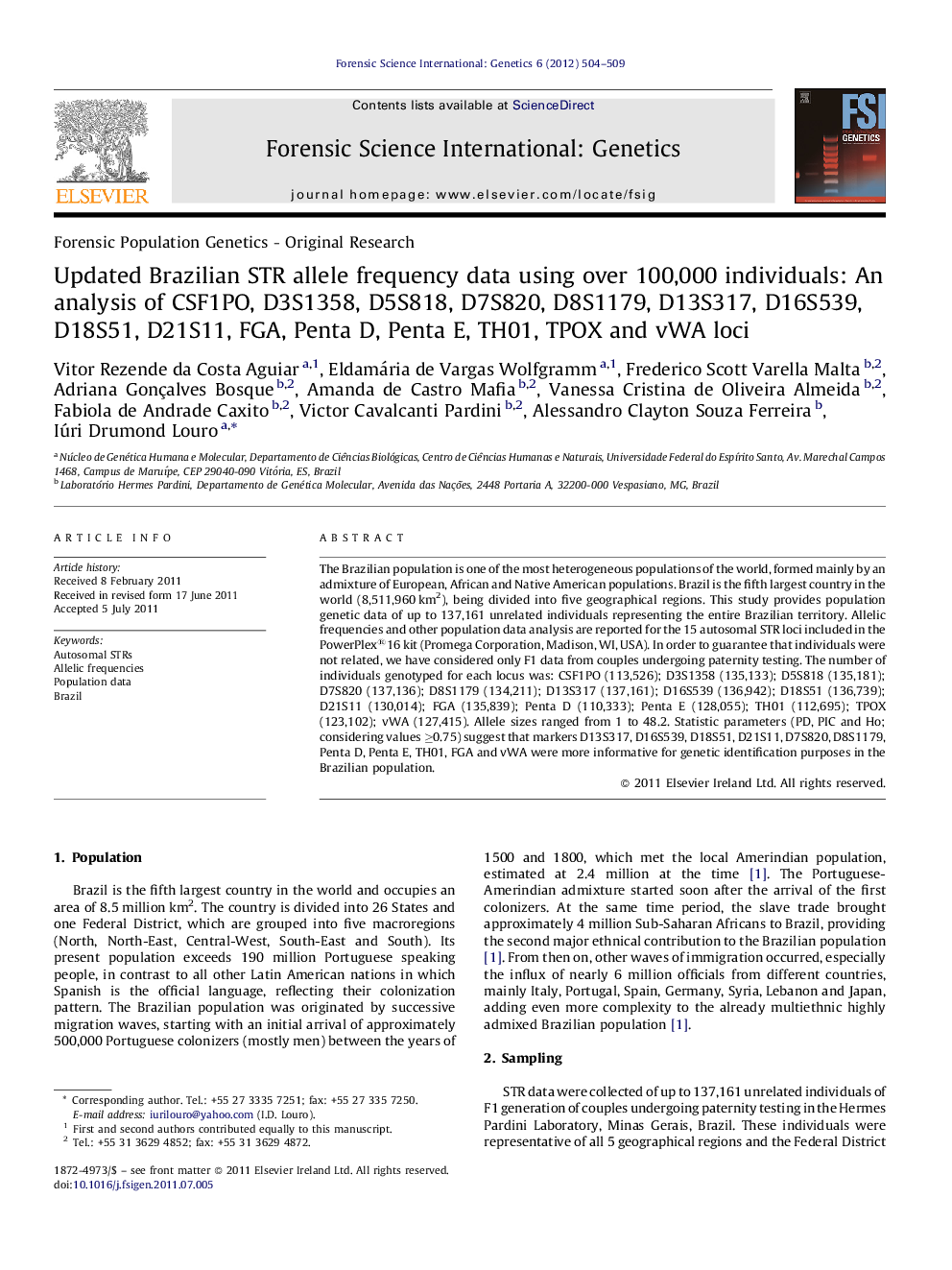| Article ID | Journal | Published Year | Pages | File Type |
|---|---|---|---|---|
| 98884 | Forensic Science International: Genetics | 2012 | 6 Pages |
The Brazilian population is one of the most heterogeneous populations of the world, formed mainly by an admixture of European, African and Native American populations. Brazil is the fifth largest country in the world (8,511,960 km2), being divided into five geographical regions. This study provides population genetic data of up to 137,161 unrelated individuals representing the entire Brazilian territory. Allelic frequencies and other population data analysis are reported for the 15 autosomal STR loci included in the PowerPlex®16 kit (Promega Corporation, Madison, WI, USA). In order to guarantee that individuals were not related, we have considered only F1 data from couples undergoing paternity testing. The number of individuals genotyped for each locus was: CSF1PO (113,526); D3S1358 (135,133); D5S818 (135,181); D7S820 (137,136); D8S1179 (134,211); D13S317 (137,161); D16S539 (136,942); D18S51 (136,739); D21S11 (130,014); FGA (135,839); Penta D (110,333); Penta E (128,055); TH01 (112,695); TPOX (123,102); vWA (127,415). Allele sizes ranged from 1 to 48.2. Statistic parameters (PD, PIC and Ho; considering values ≥0.75) suggest that markers D13S317, D16S539, D18S51, D21S11, D7S820, D8S1179, Penta D, Penta E, TH01, FGA and vWA were more informative for genetic identification purposes in the Brazilian population.
